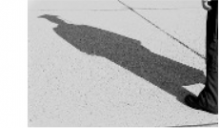 PhD defense of Pierre JACQUET on 11/09/22
PhD defense of Pierre JACQUET on 11/09/22


PhD defense of Pierre JACQUET from TIMC BCM on november, the 9th, at 2pm:
" Tumour metabolism:
modelling for understanding spatiotemporal adaptability "
-
Place: Salle des thèse (n°109) du Bâtiment Boucherle, Faculté de Médecine et de Pharmacie, Site Santé, La Tronche
 Jury:
Jury:
- Angélique Stéphanou, Chargée de recherche, CNRS Grenoble, Supervisor
- Olivier Gandrillon, Directeur de Recherche, CNRS Lyon, Reporter
- Mathilde Badoual, Professeure des Universités, Université Paris-Diderot, Reporter
- Patricia Thébault, Maîtresse de conférences, Université de Bordeaux, Examiner
- Loren Coquille, Maîtresse de conférence, Université Grenoble Alpes, Examiner
- Olivier François, Professeur des Universités, Grenoble INP, Examiner
 Keywords:
Keywords:
hybrid modelling, energy metabolism, Warburg effect, simulations
 Abstract:
Abstract:
The Warburg effect, often presented in the literature as an intrinsic metabolic feature of cancer, is the subject of much research to understand its origin. However, if this overproduction of lactic acid has been observed for a long time in tumours, it represents only a part of the metabolic states that can be adopted by cancer cells. The work carried out during this thesis aimed to provide some answers concerning the emergence of spatiotemporal heterogeneity in tumour energy metabolism. This problematic was addressed through an epistemological approach and through modelling by extending an existing model based on experimental data. The Warburg effect and associated terms such as aerobic glycolysis, the notion of metabolic switch or metabolic reprogramming are thus questioned through the differences in interpretation within the literature and by observing a semantic and conceptual drift of these terms since Otto Warburg's observations in 1956.
The model developed is a hybrid model, a combination of discrete formalisms (taking into account autonomous cells and associated cellular processes) and continuous formalisms (metabolism, diffusion of substrates that define the environment - oxygen, glucose and lactate and acidity whose often neglected role is highlighted in this thesis). It allows the simulation, in 2D (and 3D), of a tumour spheroid composed of thousands of cells with their own characteristics. The spheroid is a classically studied experimental model which is used here as a reference and studied in parallel within our team using cells from gliomas. The model allows us to highlight, through several simulations, the consequences on the tumour tissue of variations in the environment (passive depletion of substrates, cyclic hypoxia, acid shocks or glucose deprivation) and thus to provide a new understanding of the regulation of metabolism.
The results obtained highlight the importance of the pyruvate-lactate pair in the regulation of energy pathways in tumour metabolism. The integration of the influence of acidity in the model, based on recent experimental observations, shows that it is a key factor in the regulation of these energy pathways. Thus, the respiration/fermentation dichotomy classically presented in the literature is not relevant, as cells modulate the proportion of these two modes of energy production in a continuous, progressive and spatially heterogeneous manner, as opposed to a rapid and irreversible switch. In addition, a form of cooperation between cells has emerged that can be likened to the reverse Warburg effect. As a result, the Warburg effect is not a universal feature of tumour metabolism, but a contextual and transient metabolic manifestation. The metabolic landscape of the cell-environment system then dynamically determines the ability of cells to survive external conditions and epigenetic regulations modulate their potential to move within this landscape. Without ruling out the important role of genetic mutations within tumour cells, the results show that they are not systematically necessary for the emergence of extreme and/or pathologically characterised metabolic modes. This work provides new ways of approaching the question of metabolism in order to adopt, in the future, therapeutic strategies adapted not only to the tissue specificities of each patient, but also to think of a tumour as a complex ecosystem that is not limited to its genetic variety.
